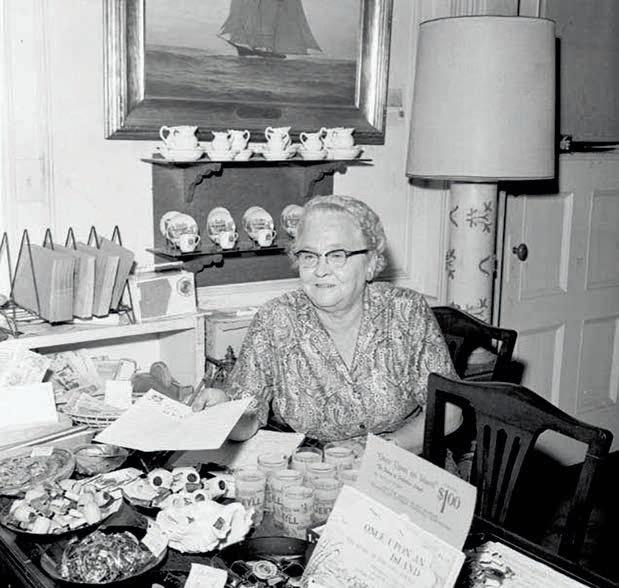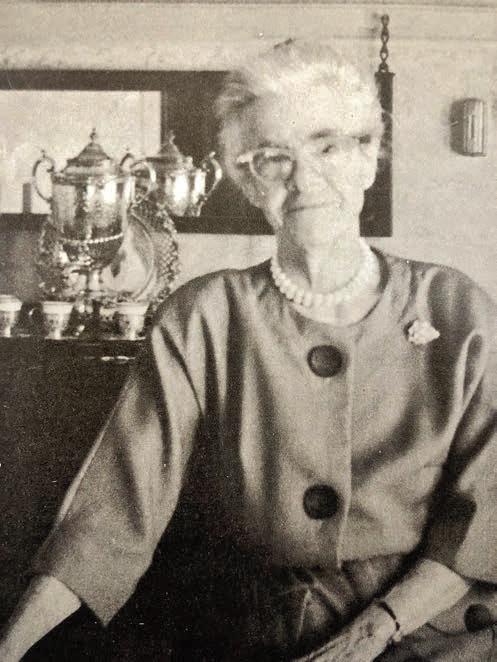
3 minute read
Women Preserving History
Coastal Georgia women have been a driving force behind sharing and safeguarding our history. They have written it down, compiled records and resources, and taken steps to make it easily accessible to the public. They have been behind the scenes and at the forefront.
On Jekyll Island, we have Tallulah “Tallu” Fish to thank for the founding of its museum. This Georgia native grew up in
Waycross and became enchanted by Jekyll Island on visits to Brunswick with her mother. As an adult, Tallu pursued a career in journalism in Kentucky, writing as a columnist for Louisville’s The Courier-Journal After the death of her husband, she found her way back to Georgia and was hired by the state to establish the Jekyll Island Museum in Indian Mound Cottage.
According to Mosiac, Jekyll Island Museum curator Andrea Marroquin, Fish was given less than a month to complete the task. Fish got to work immediately, moving into the servants’ quarters at the cottage, and salvaging what she needed from the Historic District’s buildings and cottages to bring the Jekyll Island Club era back to life for visitors to what was once William Rockefeller’s island home. With everything from furniture and porcelain treasures to taxidermy and her magical “Wishing Chair,” Fish curated displays designed to attract and implemented clever ways to raise money for the museum. Guests were first welcomed to the Jekyll Island Museum on December 11, 1954 – the same day the Jekyll Island causeway opened to the public.
Fish resided at Indian Mound Cottage for more than eight years before moving to a house on Bliss Lane and remained at the helm of the museum until her retirement in 1969. She compiled the archives at the museum and wrote several books and articles about Jekyll Island during that time. While Fish died in 1971, her legacy lives on with a street on the island named after her and several of the items she originally collected for the museum, including the Wishing Chair, still remain in Indian Mound Cottage along with a portrait of her that was painted by her daughter Betty Smith. During the festivities last year that marked Jekyll Island’s 75th anniversary the island’s first mural art installation was created in Beach Village and formally dedicated. That mural was painted by Tallu’s greatgrandson Wylie Caudill, an interactive public mural artist from Louisville, KY. How fitting.

On St. Simons Island, it was Abbie Fuller Graham who founded the library in 1937. It began with 50 books temporarily housed in the home of Captain and Mrs. J.C. Clark on Arnold Road. Later that year, Glynn County Commissioners agreed to house the library in the Casino building under the sponsorship of the Cassina Garden Club.
Drums along the Mohawk by Walter Edmonds (1936) was purchased from the Baker & Taylor Company for $1.88 as the first book accessioned by the library. It remains there today. Mrs. Graham is also known for her book Old Mill Days 1874-1908 This scrapbook history of St. Simons Island is credited by Eugenia Price as the inspiration for her novel, Beloved Invader , and the books that followed to make up her St. Simons Trilogy.
Atrue national treasure, Mary Elizabeth “Bessie” Jones (1902-1984) has been described by the National Endowment for the Arts as a shining representative of the musical heritage of the Georgia Sea Islands, “a style of music unlike any other in America or the world.” Bessie helped form the Georgia Sea Island Singers in the 1960s and recorded both with them and as a solo performer. She is known for singing this distinctive African influenced American folk music of endurance and freedom in the unique dialect of the islands “in a Bahamian accent accompanied by wild, outrageous African handclap rhythms.”
Bessie wasn’t born on St. Simons Island or in the Sea Islands at all. Her origins were in Smithville and, later, Dawson, where she grew up in a large, extended family who used music and storytelling to teach her “the old ways.” Throughout her life Bessie traveled a great deal and held many jobs from childcare to farmhand. She settled on St. Simons Island in 1933 with her second husband, George. Here she joined Lydia Parish’s Spiritual Singers Society of Coastal Georgia. After Bessie’s husband George died in 1945, she continued










